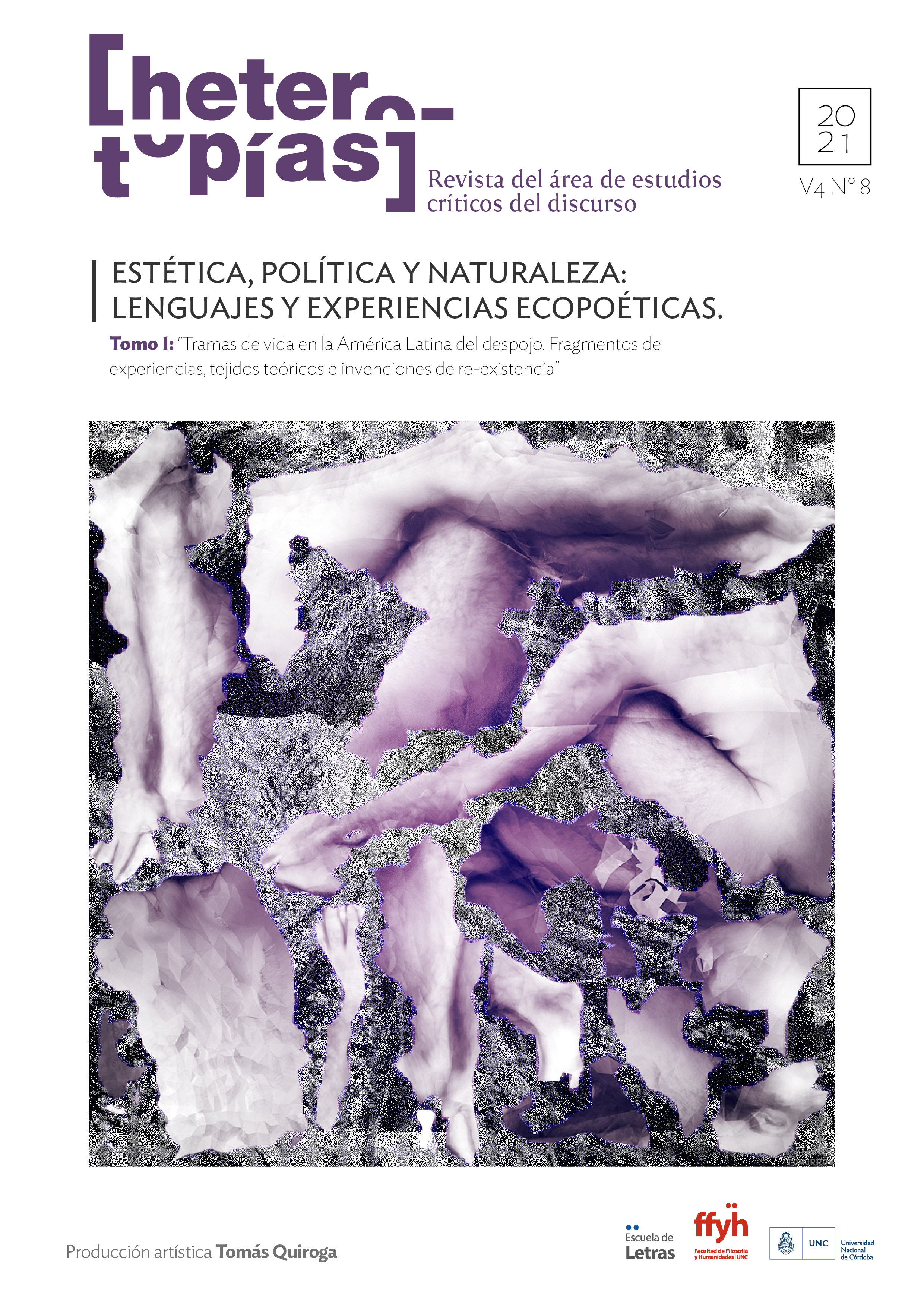Reconstructions
Main Article Content
Abstract
The reflection on what art can reveal or disclose opens a discussion about the real, always contentious for aesthetics, philosophy, psychoanalysis, social theory, and today rarefied by the crisis of the regimes of truth, the empire of fake news and “alternative facts”. But the real did not disappear as is rumored, assures the art historian Hal Foster, only that the discussion no longer concerns its presence but its position. Some of the most innovative artistic and narrative projects of the last decades are less interested in exposing a given reality behind a representation, than in reconstructing an occluded reality or pointing out an absent reality. And it is perhaps Forensic Architecture, a research group made up of architects, filmmakers, visual artists, journalists and lawyers, the group that has most actively undertaken the reconstruction of acts of violence and human rights violations, with extraordinarily innovative methods of production and visualization of evidence in different formats. But literature can also expand its limits to show what we cannot see with processes of materialization and mediatization analogous to those of Forensic Architecture. La compañía (2019) by Mexican artist and writer Verónica Gerber Bicecci deploys a wide range of media and languages to reconstruct one of the most devastating cases of predatory extractivism in Mexico, starting from the ruins of Nuevo Mercurio, a mining town in the state of Zacatecas. With reconstructive impetus, Gerber Bicecci assembles very diverse materials, brings together languages and hybrid genres to compose a story of Nuevo Mercurio that faces the complexity of its plundering rise and fall, and the sinister spectrum of its aftermath, traumatic, psychological, environmental and social networks that still endure.
Downloads
Article Details

This work is licensed under a Creative Commons Attribution-NonCommercial-ShareAlike 4.0 International License.
Those authors who have publications with this journal, accept the following terms: Those authors who have publications with this journal, accept the following terms:
a. The authors will keep their copyright and guarantee to the journal the right of first publication of their work, which will be simultaneously subject to the Creative Commons Attribution - Non-Commercial - Share Alike (by-nc-sa) Attribution License; no commercial use of the original work or any derivative works is allowed, the distribution of which must be done with a license equal to the one that regulates the original work.
b. Authors may adopt other non-exclusive license agreements for the distribution of the published version of the work (e.g., deposit it in an institutional telematic archive or publish it in a monographic volume) provided that the initial publication in this journal is indicated.
c. Authors are allowed and recommended to disseminate their work through the Internet (e.g. in institutional telematic archives or on their website) before and during the submission process, which may lead to interesting exchanges and increase the number of citations of the published work. (See The effect of open access).
How to Cite
References
Barenblit, F. y Medina, C. (2017). Una estética libre de estética. En AAVV, Forensic Architecture. Hacia una estética investigativa (pp.16-23). Ciudad de México: MUAC.
Bois, Y., Feher, M., Foster, H., y Weizman, E. (2016). On Forensic Architecture: A Conversation with Eyal Weizman. October, 156,116–40.
Borg Oviedo, M. (2020). Taking the Anthropocene Beyond the Earth: on La Compañía, by Verónica Gerber Bicecci. Recuperado de https://borderenvironments.com/taking-the-anthropocene-beyond-the-earth-notes-on-la-compania-by-veronica-gerber-bicecci/
Demand, T. y Foster, H. (2015). The Dailies. Londres: Mack.
Demos, T. J. (2019). Climate Control: From Emergency to Emergence. e-flux journal, 104 Recuperado de https://www.e-flux.com/journal/104/299286/climate-control-from-emergency-to-emergence/
Forensic Architecture y Praxis films. (2019). Triple-Chaser, video de alta definición color, 10’
Foster, H. (2016). Dailiness According to Demand. En October, 58, 100-112.
Foster, H. (2017). Real Fictions: Alternatives to Alternative Facts. En Artforum International, vol. 55, 8, 166–175.
Gerber Bicecci, V. (2019). La compañía. México: Almadía Ediciones.
Haraway, D. y Torres Sbarati, H. (2020). Seguir con el problema: Generar parentesco en Chthuluceno. Bilbao: Consonni.
Khatchadourian, R. (2020). The Elusive Peril of Space Junk. En The New Yorker, 28 de setiembre. Recuperado de https://www.newyorker.com/magazine/2020/09/28/the-elusive-peril-of-space-junk
Latour, B. (2010). Ensayo de un manifiesto composicionista. En Revista Fractal, 76, Recuperado de https://www.mxfractal.org/articulos/RevistaFractal76BrunoLatour.php
Parikka, J. (2015). A Geology of Media. Minnesota: University of Minnesota Press.
Svampa, M. y Viale E. (2020). El colapso ecológico ya llegó: una brújula para salir del (mal) desarrollo. Buenos Aires: Siglo XXI Editores.
Weizman, E. (2017). Forensic Architecture: Violence at the Threshold of Detectability. Brooklyn, NY: Zone Books.
Weizman, E. (2019). Open Verification. En e-flux, Becoming digital, 18 de junio. Recuperado de https://www.e-flux.com/architecture/becoming-digital/248062/open-verification/
